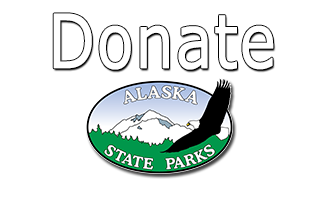Boating

With over 33,000 miles of shoreline, more than 3,000 rivers, and over 3 million lakes, Alaska is a boater's paradise. Unfortunately, Alaska has one of the highest boating fatality rates in the nation. Alaskan boaters are often a long way from assistance and the water is very cold. An unprepared boater is taking unnecessary risks.
![]() Most of Alaska's boating fatalities involve cold water immersion that, according to research, kills in several ways: initial immersion - cold water "shock," short term immersion - impaired function, longer term immersion - immersion hypothermia, and post rescue collapse. Even good swimmers may be unable to swim for more than a few minutes in Alaska's cold water. ALWAYS wear a life jacket. It's the law for kids under 13.
Most of Alaska's boating fatalities involve cold water immersion that, according to research, kills in several ways: initial immersion - cold water "shock," short term immersion - impaired function, longer term immersion - immersion hypothermia, and post rescue collapse. Even good swimmers may be unable to swim for more than a few minutes in Alaska's cold water. ALWAYS wear a life jacket. It's the law for kids under 13.
![]() Most boating fatalities are a result of a sudden capsize or fall overboard. Don't overload your boat and be ever watchful of the weather. Be prepared to stay in a safe place until the weather improves.
Most boating fatalities are a result of a sudden capsize or fall overboard. Don't overload your boat and be ever watchful of the weather. Be prepared to stay in a safe place until the weather improves.
![]() Never mix alcohol and boating. Alcohol impairs judgement, your most important tool on the water. It also slows reaction time, speeds the effects of hypothermia, and affects balance and vision.
Never mix alcohol and boating. Alcohol impairs judgement, your most important tool on the water. It also slows reaction time, speeds the effects of hypothermia, and affects balance and vision.

![]() The most common powerboating problems are mechanical or fuel related. Practice preventive maintenance. Do a thorough pre-departure check before each trip. Test run engines and equipment. Make sure you have the equipment required by law and other items like a paddle, first aid kit, tools, and spare parts. Carry adequate fuel and use a fuel/water separator. Plan on 1/3 for the trip out, 1/3 for the trip back, and 1/3 spare.
The most common powerboating problems are mechanical or fuel related. Practice preventive maintenance. Do a thorough pre-departure check before each trip. Test run engines and equipment. Make sure you have the equipment required by law and other items like a paddle, first aid kit, tools, and spare parts. Carry adequate fuel and use a fuel/water separator. Plan on 1/3 for the trip out, 1/3 for the trip back, and 1/3 spare.
![]() File a float plan with family or friends and stick to it. Notify the same people on your return.
File a float plan with family or friends and stick to it. Notify the same people on your return.
![]() Take boating classes relevant to your type of boating and then continue to build your knowledge and skills. Teach passengers how to handle common boating emergencies.
Take boating classes relevant to your type of boating and then continue to build your knowledge and skills. Teach passengers how to handle common boating emergencies.
For More Information on Boating Safety: See the Office of Boating Safety web site!

